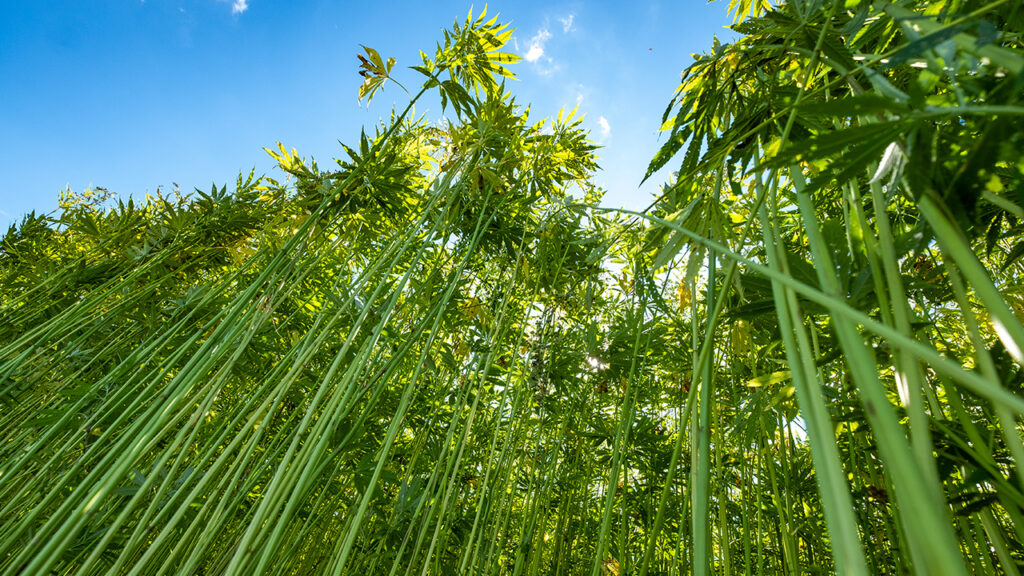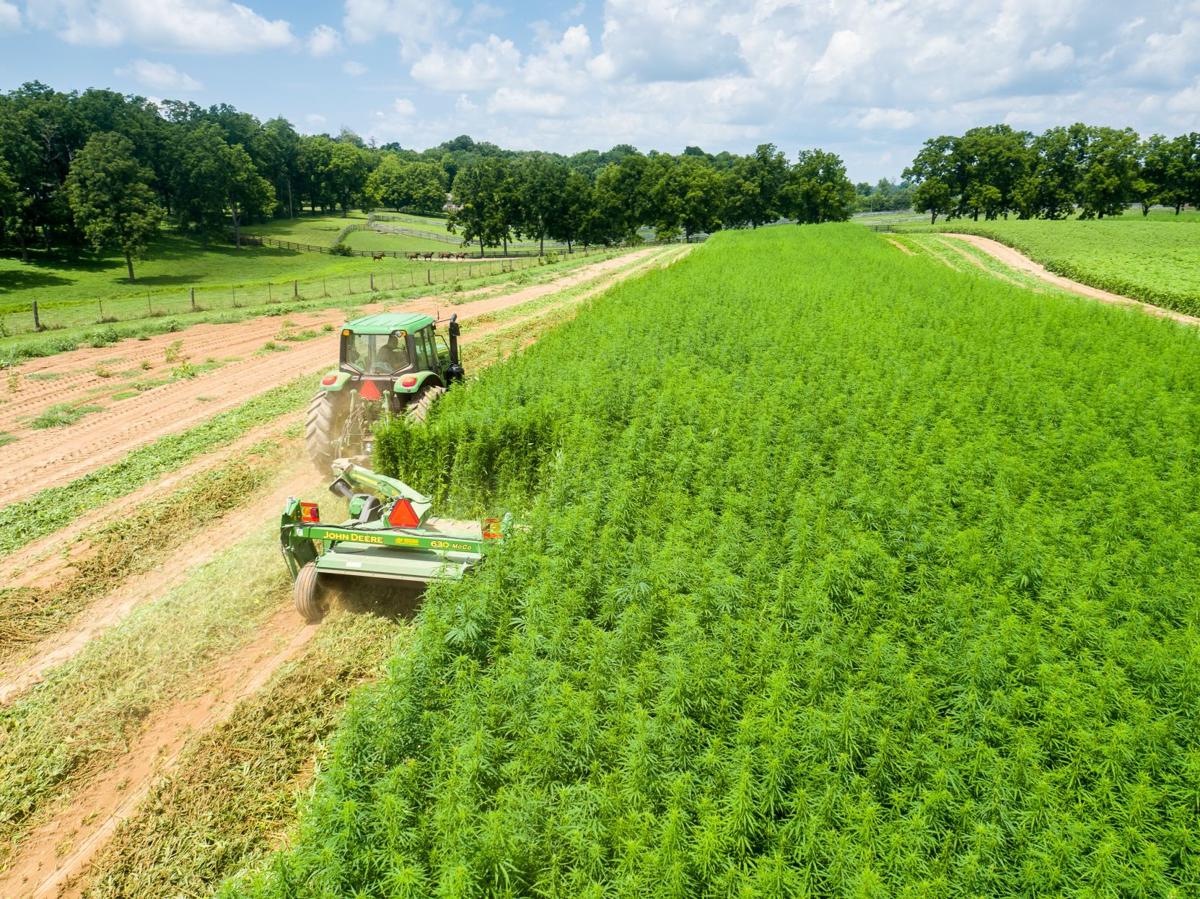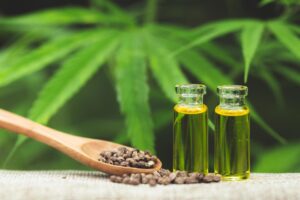In the verdant fields of American agriculture, few crops stir as much controversy as industrial hemp. Once vilified alongside its psychoactive cousin, marijuana, hemp has clawed its way back into the spotlight, promising everything from sustainable textiles to revolutionary medicines. But as of October 2025, a seismic shift looms on the horizon, courtesy of the Congressional Research Service (CRS) reports dissecting the House Appropriations Bill. This isn’t just bureaucratic fine print—it’s a potential rewrite of what “hemp” even means. Picture this: a plant that fueled the sails of Christopher Columbus’s ships now facing a federal clampdown that could slash its multibillion-dollar market. Drawing from CRS insights and hard data, let’s peel back the layers of this green gold rush, where innovation collides with regulation in a battle for America’s farmlands.
Hemp’s story is one of redemption. Legalized under the 2018 Farm Bill, it exploded from obscurity. That landmark legislation defined hemp as Cannabis sativa L. with no more than 0.3% delta-9 tetrahydrocannabinol (THC) on a dry weight basis, yanking it from the Controlled Substances Act’s Schedule I stranglehold. Suddenly, farmers could cultivate this versatile powerhouse without DEA raids. By 2024, U.S. planted acres surged 64% to 45,294, per USDA stats, with harvested open-field yields hitting 21,079 acres in early 2025 reports. The economic ripple? A whopping $417 million in production value last year alone, a 46% jump from 2023. Globally, the industrial hemp market hit $9.47 billion in 2024, eyeing $11.42 billion this year, according to Fortune Business Insights. In the U.S., food-grade hemp alone is valued at $685.4 million in 2025, projected to climb to $756.2 million by year’s end.
Yet, this boom hid a thorny underbelly: the “hemp loophole.” Savvy processors exploited the 0.3% delta-9 THC threshold, heating tetrahydrocannabinolic acid (THCA) into intoxicating delta-8 and delta-9 variants. Gas stations and online shops peddled gummies and vapes that flew under radar, raking in billions while regulators scrambled. CRS reports, like the June 2025 Insight on FY2026 Agriculture Appropriations, spotlight how these exploits flooded markets with unregulated highs, prompting outcries from attorneys general in over 20 states. Enter the House’s bold stroke—a provision in the FY2026 bill that doesn’t just tweak definitions; it reimagines them.
The Loophole Labyrinth: Navigating Hemp’s Shadowy Pathways
Imagine a crop where legality hinges on a single decimal point, yet chemistry laughs in the face of law. The 2018 Farm Bill’s delta-9 focus left room for total THC mischief. THCA, inert in raw form, decarboxylates into THC upon heating—voilà, a “hemp” joint with 20% potency. Delta-8, synthesized from CBD, mimicked marijuana’s buzz without tripping the delta-9 wire. CRS’s August 2025 update on Hemp Restrictions paints a vivid picture: these “derivatives loopholes” birthed a shadow industry, with products evading FDA oversight under the Federal Food, Drug, and Cosmetic Act.
Legal skirmishes abound. In AK Futures LLC v. Boyd Street Distro (2022), the Ninth Circuit upheld delta-8 as hemp, derived from compliant plants. But the Fourth Circuit’s 2024 Anderson v. Diamondback ruling went further, greenlighting THC-O and delta-10, thumbing its nose at DEA’s synthetic THC crackdown. Post-Loper Bright (2024), Chevron deference crumbled, empowering courts to interpret statutes raw. States fought back: Virginia’s SB 903 capped total THC at 0.3%, surviving preemption challenges in N. Va. Hemp & Ag. LLC v. Virginia (2025). Arkansas’s Act 629 criminalized synthetic conversions, upheld in Bio Gen LLC v. Sanders (2024). CRS notes over a dozen pending suits, from New Jersey’s Third Circuit to Wyoming’s Tenth, underscoring a fractured front.
This chaos isn’t abstract—it’s economic dynamite. The U.S. hemp market, forecasted at $6.22 billion by 2030 with a 21.1% CAGR (Grand View Research), teeters on these edges. CBD sales alone topped $5 billion in 2024, per Statista, fueling 50,000 jobs. But as CRS warns in its 2018 Farm Bill retrospective (updated August 2025), unchecked intoxicating variants pose public health risks, from youth overdoses to contaminated edibles. The House Appropriations Bill steps in here, wielding the Industrial Hemp Bill as a scalpel to excise the rot.

CRS Chronicles: Illuminating the Appropriations Inferno
The Congressional Research Service, Congress’s nonpartisan oracle, delivers unflinching dissections. Its June 2025 report on the FY2025 bill—mirrored in FY2026 drafts—zeros in on Section 760 (now 759), a near-identical salvo. This provision amends 7 U.S.C. §1639o, swapping delta-9 for total THC (THCA included), aligning with USDA’s 2021 regs. But the real thunderbolt? A bifurcated definition: “industrial hemp” for fiber, grain, seeds, or research—non-cannabinoid havens—versus “hemp-derived cannabinoid products” for human/animal ingestion, inhalation, or topicals.
CRS elucidates: excluded products boast “quantifiable amounts” of THC or mimics, as HHS deems in USDA consults. Synthetics? Out. Intoxicating naturals? Banished from hempdom. The committee’s report mandates an FDA task force for “science-based guidance,” shielding trace-THC non-intoxicators. Rationale? Closing the “THCA loophole, 0.3% loophole, and derivatives loophole,” per the Cannabis Regulators Association. House appropriators decry “unregulated intoxicating hemp products” in gas stations, echoing Trump-era mandates.
Figures underscore urgency. USDA’s April 2025 National Hemp Report logs 27,680 open acres planted, 3.24 million protected plants—yet cannabinoid focus dominates 80% of value, CRS estimates. Without reform, DEA’s Schedule I net ensnares more, stalling innovation. The Hemp Bill Industrial framework, as CRS frames it, carves a safe harbor for true industrials: biofuels from 10 million gallons annually (2024 data), textiles from 500 tons of fiber.
Redefining the Rules: The Industrial Hemp Bill’s Bold Stroke
At its core, the Industrial Hemp Bill in the House Appropriations saga is a phoenix act—burning old ambiguities to birth clarity. Section 759 expands hemp to “industrial hemp products” while excommunicating consumables. Viable seeds over 0.3% total THC? No-go. This isn’t prohibition; it’s precision. CRS’s FY2026 analysis projects it would “effectively prohibit” delta-8 sales, slashing that $2 billion submarket overnight.
Industry titans howl. The U.S. Hemp Roundtable warns of “dismantling” a sector birthing 100,000 jobs by 2030. Yet proponents tout safety: 2024 saw 1,200 ER visits tied to unregulated hemp, per CDC. Economically, fiber and grain persist—2024’s $417 million value could pivot to $1 billion in non-cannabinoid exports by 2028, USDA models. The bill’s manager’s amendment softens blows, exempting “trace or insignificant” THC, fostering CBD isolates for pharma.
Legal mechanics intrigue: Appropriations bills rarely amend code, but House rules bend for this. Echoes of failed 118th Congress tries (H.R. 8467’s §10006) haunt it, yet momentum builds. Senate’s S. 5335 mirrors, hinting bipartisan buy-in.
Dollars and Dreams: Hemp Bill Industrial’s High-Wire Act
Crunch the numbers, and the Hemp Bill Industrial emerges as a high-stakes wager. Pre-bill, hemp’s CAGR outpaces corn’s 3% at 17.5% (Grand View). Post? Cannabinoid crash could halve the $11 billion U.S. slice by 2027, per Market.us projections. But industrial pivots shine: Kentucky’s 5,000 fiber acres yielded $50 million in 2024; Colorado’s grain hit 2,000 tons.
Globally, China’s 70,000 acres dwarf U.S. 45,000, but America’s tech edge—bio-plastics from hemp hurds—promises $3 billion by 2030. CRS flags risks: small farmers (90% under 50 acres) face compliance costs spiking 30%, per 2025 surveys. Wins? Cleaner regs lure investors, boosting R&D in non-intoxicating terpenes.
Harvesting Horizons: Hemp’s Next Chapter Unfolds
As the House Appropriations Bill hurtles toward vote, hemp stands at a crossroads. CRS reports, with their fact-laden foresight, illuminate a path where industrial hemp thrives sans shadows. The Industrial Hemp Bill and Hemp Bill Industrial debates aren’t mere policy squabbles—they’re blueprints for a $47 billion global juggernaut by 2032. Will fields bloom with fibers and fuels, or wither under overreach? One thing’s certain: in this green gamble, America’s farmers hold the seeds of tomorrow. Tune in as Congress sows—or reaps—the whirlwind.
In the wake of the groundbreaking House Appropriations Bill, industrial hemp is poised for explosive growth—$417 million in U.S. production value last year, surging to $11.42 billion globally by 2025. At NanoHempTechLabs, we’re leading the charge with premium wholesale products: sustainable fibers for textiles, nutrient-rich seeds for food innovation, and cutting-edge CBD isolates compliant with the new total THC regs. Our nano-enhanced formulations ensure purity, potency, and profitability, closing loopholes while opening doors to billions in market potential.
Partner with us for bulk supplies that fuel your business—scalable, eco-friendly, and regulation-ready. Schedule a call today to wholesale the green revolution!
Reference:
- Liu, Y. and Sprando, R. (2022). Physiologically based pharmacokinetic modeling and simulation of cannabinoids in human plasma and tissues. Journal of Applied Toxicology, 43(4), 589-598. https://doi.org/10.1002/jat.4409
- Mareck, U., Fußhöller, G., Schertel, T., Petring, S., Huestis, M., & Thevis, M. (2022). Risk of unintentional antidoping rule violations by consumption of hemp products. Drug Testing and Analysis, 15(1), 27-41. https://doi.org/10.1002/dta.3327
- Spindle, T., Sholler, D., Cone, E., Murphy, T., ElSohly, M., Winecker, R., … & Vandrey, R. (2022). Cannabinoid content and label accuracy of hemp-derived topical products available online and at national retail stores. Jama Network Open, 5(7), e2223019. https://doi.org/10.1001/jamanetworkopen.2022.23019





